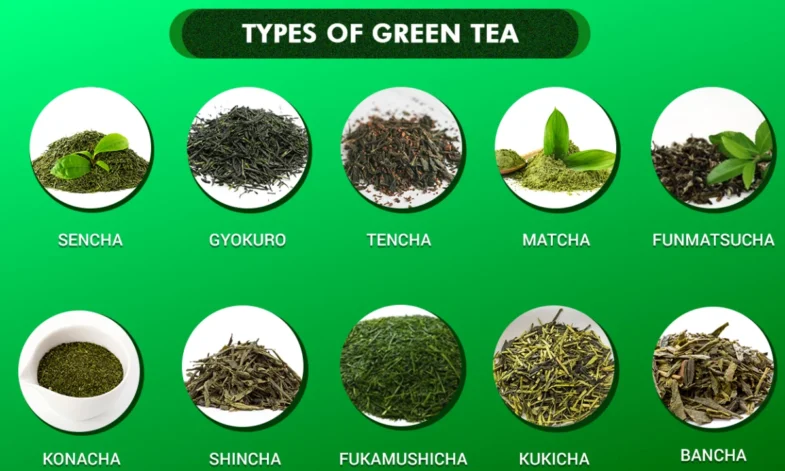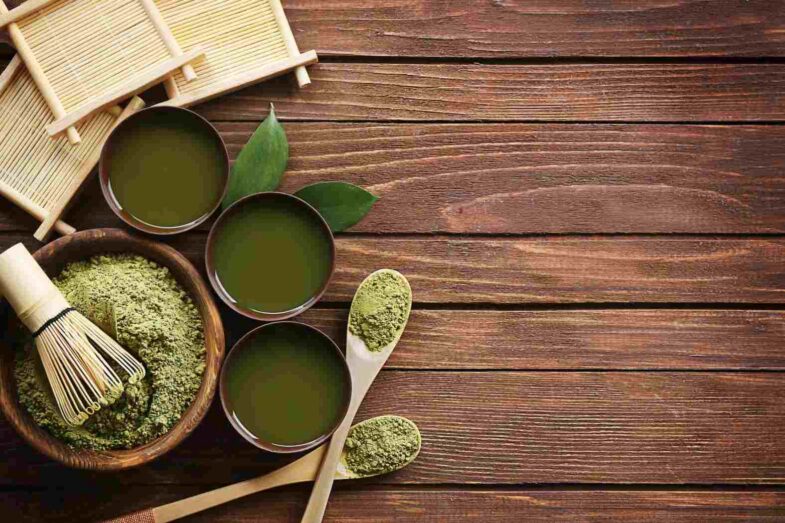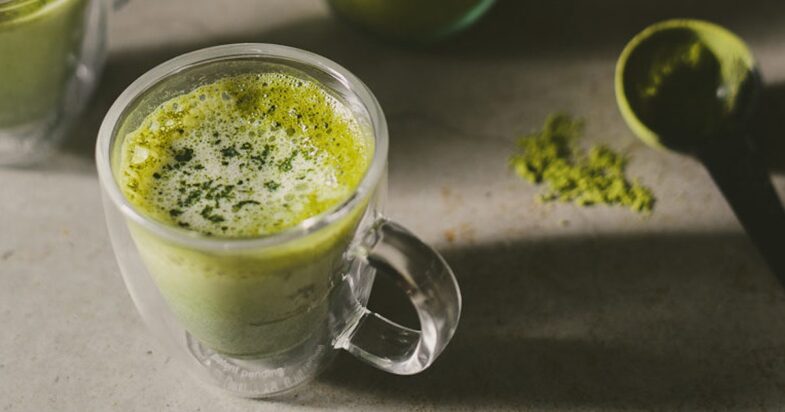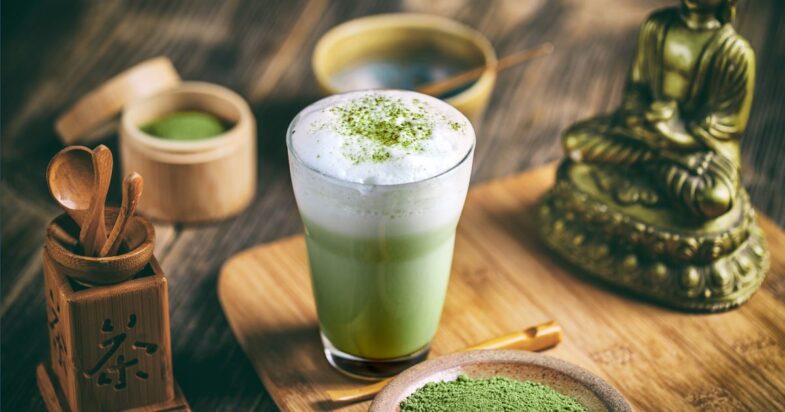Matcha has become increasingly popular in recent years, with people touting its numerous health benefits and unique flavor. However, with this popularity comes a number of myths and misconceptions. Many people are unsure about what this powder is, how it is made, and what makes it different from other types of tea.
In this article, we will delve into some of the most common myths about matcha and provide evidence-based information to help you separate fact from fiction. We will explore its history and origins of it, the health benefits it offers, and the differences between matcha and other types of tea. By the end of this article, you will have a better understanding of what matcha is, what it can and can’t do for your health, and how to best enjoy it as part of a healthy lifestyle.
Myth 1: Matcha is just another type of green tea
It is often associated with green tea, and it’s easy to see why. Both types of tea come from the Camellia sinensis plant and offer a range of health benefits. Nevertheless, this plant is actually quite different from other types of tea, including green tea powder. Unlike green tea, which is made by steeping tea leaves in hot water and then discarding the leaves, it is made by grinding whole tea leaves into a fine powder. This means that when you drink it, you are consuming the entire tea leaf, rather than just the water-soluble components.
This unique preparation method gives matcha a much higher concentration of nutrients, including antioxidants, catechins, and chlorophyll. In fact, it contains up to three times the amount of epigallocatechin gallate (EGCG), a powerful antioxidant, as green tea. Because tea is consumed in powder form, it can be used in a variety of culinary applications, from smoothies and baked goods to savory dishes. Therefore, while matcha and green tea may share some similarities, it’s important to recognize that this is a distinct and unique type of tea with its own set of health benefits and culinary uses.

Source: lybrate.com
Myth 2: Matcha is a miracle weight loss cure
One of the most persistent myths about matcha is that it can magically help you shed pounds. While this plant does offer a range of health benefits, it’s important to recognize that there is no miracle cure for weight loss.
Nevertheless, there is some research that suggests matcha may be a beneficial supplement to a sensible weight-loss strategy. A substance found in called EGCG has been demonstrated to increase metabolism and aid in fat burning. These effects, though, are rather minor, and it’s doubtful that they’ll be enough to cause substantial weight reduction on their own.
This powdered tea should be used with a nutritious diet and regular exercise to provide the most weight reduction benefits. You may develop a sustainable lifestyle that encourages general health and well-being by including it in a healthy, nutrient-dense diet and being active. Powder tea can therefore be a useful tool in your arsenal even if it may not be a magical weight-loss treatment.
Myth 3: It is too expensive
One of the most common misconceptions about matcha is that it’s too expensive for the average person to enjoy on a regular basis. While it’s true that high-quality matcha can be more expensive than other types of tea, it’s important to consider the value that this plant offers.
When you drink it, you’re consuming the entire tea leaf, which means that you’re getting a much more concentrated dose of nutrients than you would from steeped tea. In fact, one serving has been shown to contain as many antioxidants as 10 cups of regular green tea. Further, because this powdered tea is so concentrated, a little goes a long way. Many people find that they only need to use a small amount of matcha to get the desired flavor and health benefits, which means that a single package can last for quite a while.
It’s also important to keep in mind that there are many different types on the market, some of which may be rather pricey. However, there are also many reasonably priced choices available that have great flavor and quality. You may locate a selection of matcha that is within your price range and yet provides all of the health advantages and mouthwatering flavor that matcha is renowned for by doing some research and investigating various brands and grades.
Myth 4: Matcha is just a trend

Source: theberkey.com
Some people assume that matcha is just a passing fad and that it will soon fade into obscurity as so many other health foods crazes. However, the reality is that it has been around for centuries and has been a staple of Japanese culture for just as long.
Matcha has been used in traditional Japanese tea ceremonies for hundreds of years, and the tea itself has been consumed for even longer. In recent years, this plant has become more popular in other parts of the world, thanks in part to its impressive health benefits and unique flavor profile.
But while the popularity of matcha may ebb and flow over time, the fact remains that this tea is a beloved and time-tested tradition in many parts of the world. Whether you’re a longtime enthusiast or just discovering this incredible tea for the first time, it’s clear that matcha is much more than just a passing fad. Its rich history and cultural significance ensure that it will continue to be a beloved beverage for generations to come.
Myth 5: Matcha is too difficult to prepare
Some people are intimidated by the idea of preparing matcha, assuming that it must be a complicated and time-consuming process. However, the truth is that preparing is actually quite simple and can be done in just a few minutes with the right tools and techniques.
To prepare this tea, you’ll need a few essential items: a small bowl, a bamboo whisk (, a measuring scoop, and of course, some high-quality powder. Once you have these items, you can begin the preparation process.
Myth 6: Matcha is only meant for drinking
While matcha is most commonly consumed as a tea, it can actually be used in a variety of different ways. One of the benefits is that it comes in a finely ground powder form, which makes it incredibly versatile and easy to incorporate into different recipes.
Some popular ways to use it include adding it to smoothies or protein shakes for a boost of antioxidants and energy, incorporating it into baked goods like muffins or cookies for a unique and delicious flavor, or even using it as a seasoning for savory dishes like stir-fries or salads.

Source: elitedaily.com
Enjoying Matcha in a Healthy and Balanced Way
While there are certainly many myths and misconceptions surrounding this incredible plant, the truth is that it can be an incredibly healthy and beneficial addition to your diet. As we’ve seen, it is packed with antioxidants, vitamins, and minerals, and can help to boost energy, improve focus, and support overall health and wellness.
However, it’s important to remember that like any food or beverage, matcha is best enjoyed in moderation and as part of a balanced and varied diet. Drinking too much matcha or relying on it as a quick fix for health or weight loss goals can lead to negative effects like caffeine jitters, digestive issues, or nutrient imbalances




